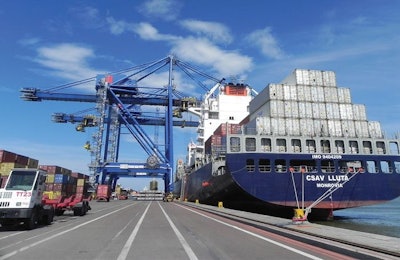
In order to serve a growing market for poultry meat and eggs, global poultry meat trade is projected by the U.S. Department of Agriculture (USDA) to continue its trend of expansion in 2017 and 2018. Exports of 10.5 million metric tons in 2014 are forecast to rise to 11.1 million metric tons in 2017 and 11.4 million metric tons in 2018, with imports following the upward trend (Figure 1). Over the next decade, USDA projects exports will grow from 11.4 million metric tons to nearly 15 million metric tons by 2027, an increase of 31.6 percent. Imports globally are forecast to rise 32.4 percent from nearly 10.5 million metric tons in 2017 to nearly 14 million metric tons by the end of the outlook period in 2027 (Figure 2). Growth in imports and exports will be mixed for different world regions, with growth slowing although mostly positive around the globe. Most growth in imports will be seen by developing regions, with developed regions continuing to capture the majority of poultry exports over the next decade (Figure 3).
In terms of market share, distribution by the top five importing and exporting countries varies, according to the Organization for Economic Cooperation and Development (OECD) and Food and Agriculture Organization’s (FAO) latest Agricultural Outlook publication. While the top five importers capture a nearly even share of the poultry market, with just 1.56 percent between the first and fifth importer, the export market looks different. For global poultry exports, OECD-FAO project the top exporter to capture 33.49 percent of the export market and the fifth to capture just 3.18 percent of the poultry export market (Figure 4).
According to projections from USDA, the top exporters in these developed markets have been and are projected to continue to be Brazil, the U.S., EU and Thailand. Exports in these regions are projected to increase by 55.5 percent, 23.9 percent, 0.4 percent and 72.5 percent respectively over the 10-year outlook period (Figure 5). Brazil’s top export markets will remain in the Middle East and Asia, specifically in the countries of Saudi Arabia, China and Japan. Overall, Brazil’s exports for the first half of 2018 from all top exporters make up a combined a 1.1 million metric tons, according to USDA estimates (Figure 6). Changing diets in the Middle East as well as Africa are projected to increase the amount of all meats imported to those regions over the next decade, with poultry capturing a large share (Figure 7). Overall, Algeria will import more than 68 percent more meat in 2027 than in the base period of 2015-17, Iran 66 percent more and countries in the historical Arab region known as the Mashreq more than 65 percent more meat will be imported.
Poultry meat and eggs from the US
As a major poultry meat and egg producer, the U.S. is once again forecast to account for a large portion of the poultry traded around the world. The U.S. is forecast to increase exports of broilers and turkeys to 7,045 and 640 million pounds, rtc, respectively for 2019, based on USDA projections (Table 1). With avian influenza under control, U.S. egg imports have leveled off during the past few years, while exports of eggs have risen from 2015 levels and are projected at 340 million dozen in 2019 (Figure 8).














